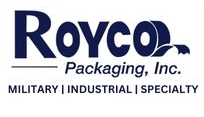In the complex world of the military, precision and standardization are huge concerns. The need for consistency and reliability has created the need for various military labels to serve as markers of specific qualities, requirements, and qualifications. These labels, frequently adhering to strict military specifications (military specs), provide a shared language that helps make sure that equipment, materials, and processes meet the exacting demands of the armed forces. Let's look into some of the most common military labels and their significance.
Understanding Military Specifications
Before examining various military labels, it's important to understand the concept of military specifications. A military specification is a precise description of the requirements, materials, and procedures that a product, system, or process must meet to be approved by the military. These specifications are in place to assure uniformity, reliability, and compatibility across different branches of the military and a number of suppliers.
MIL-DTL-17667: Chemically Neutral Wrapping Paper
One well-known example of a military label tied to military specification is MIL-DTL-17667. This designation pertains to non-corrosive, chemically neutral wrapping paper used for packaging military equipment and supplies. The specification assures that the wrapping paper maintains its integrity and does not contribute to the degradation of the packaged items.
The latest example of this is MIL-DTL-17667E (it improves upon its predecessor, MIL-P-17667D). This evolution illustrates an ongoing commitment to refining and improving the performance of the wrapping paper. The specification is also categorized into Type 1 and Type 2 materials. Each is designed for specific uses, cases, and conditions. This level of detail helps make sure the wrapping paper is tailored to meet the many needs of the military.
Common Military Labels and Their Meanings
- NSN (National Stock Number): The NSN is a 13-digit numeric code that identifies items of supply used by the military. It assures accurate identification and simplified procurement processes.
- MIL-STD (Military Standard): These are documents that set forth uniform engineering and technical requirements for military-unique processes, procedures, and practices. Compliance with MIL-STDs guarantees consistency and compatibility.
- MIL-SPEC (Military Specification): A MIL-SPEC is a formal document that outlines the requirements for materials, processes, and products. It is the basis for quality control and verification.
- MIL-PRF (Military Performance Specification): These specifications outline the performance requirements a product must adhere to. They focus on measurable outcomes, allowing for innovation in meeting those outcomes.
- CAGE Code (Commercial and Government Entity Code): This specific identifier is assigned to suppliers and manufacturers that do business with the government. It simplifies procurement and assures accountability.
Choosing the Right Supplier for Military Packaging
When it comes to adhering to military specifications and labels, partnering with the right supplier is important. One such reputable company is Royco Packaging, Inc. Based in Huntingdon Valley, Pennsylvania, Royco Packaging is an award-winning leader in the manufacturing, distribution, and conversion of military, industrial, and specialty packaging materials.
With over four decades of experience, Royco Packaging has been providing top-quality packaging solutions to businesses of all sizes, including small enterprises, large corporations, and government agencies. Our commitment to excellence and our understanding of military specifications make us a reliable partner for meeting the exacting packaging needs of the military.
To explore our offerings and find packaging solutions that align with specific requirements, interested parties can contact Royco Packaging, Inc. by calling 1(800)67-ROYCO or by using our convenient online form.
